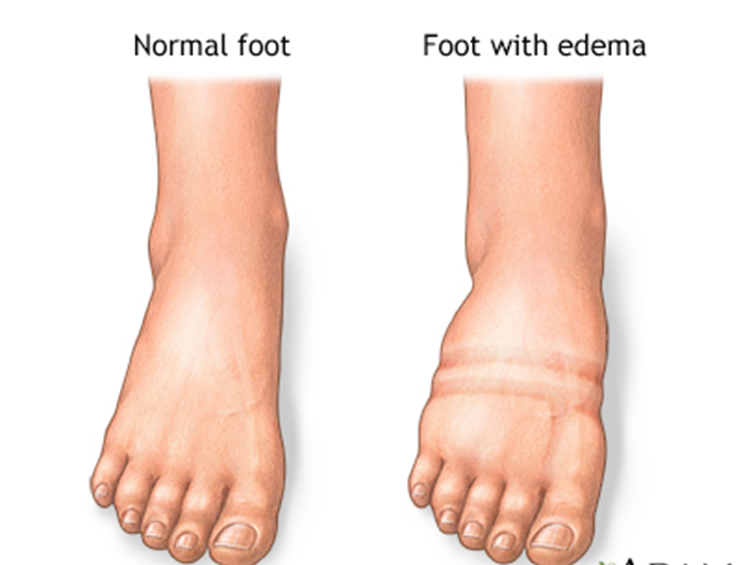A nurse is caring for an adult client who has a fever of 39.4°C (103°F) and is receiving 0.9% sodium chloride IV at 125 mL/hr. Over the last hour, the nurse notes that the client's urine output is 20 mL. The nurse should report this finding to the provider and anticipate a prescription for what?
An antipyretic medication
A diuretic medication
A blood culture
A fluid bolus
The Correct Answer is D
Choice A reason: An antipyretic medication is not the best answer because it does not address the client's low urine output. An antipyretic medication is a drug that lowers the body temperature by reducing the production of heat or increasing the loss of heat. It may help the client feel more comfortable, but it does not improve the kidney function or prevent dehydration.
Choice B reason: A diuretic medication is not the best answer because it may worsen the client's low urine output. A diuretic medication is a drug that increases the excretion of water and electrolytes by the kidneys. It may lower the blood pressure and reduce the fluid overload, but it may also cause dehydration, electrolyte imbalance, and kidney damage.
Choice C reason: A blood culture is not the best answer because it does not address the client's low urine output. A blood culture is a laboratory test that detects the presence of bacteria or other microorganisms in the blood. It may help identify the cause of the fever and guide the antibiotic therapy, but it does not improve the kidney function or prevent dehydration.
Choice D reason: A fluid bolus is the best answer because it may improve the client's low urine output. A fluid bolus is a rapid infusion of a large volume of fluid, usually isotonic saline or lactated Ringer's solution. It may increase the blood volume and pressure, improve the tissue perfusion, and stimulate the urine production. It may also help lower the fever by diluting the pyrogens and increasing the heat loss.
Nursing Test Bank
Naxlex Comprehensive Predictor Exams
Related Questions
Correct Answer is C
Explanation
Choice A reason: This is not a correct finding for hypervolemia. Hypotension is a low blood pressure, which can be caused by hypovolemia (low blood volume) or other factors. Hypervolemia is an excess of fluid in the body, which can increase the blood pressure.
Choice B reason: This is not a correct finding for hypervolemia. Bradycardia is a slow heart rate, which can be caused by heart block, medication, or other factors. Hypervolemia can cause tachycardia (fast heart rate) as the heart tries to pump the excess fluid.
Choice C reason: This is a correct finding for hypervolemia. Peripheral edema is a swelling of the extremities due to fluid accumulation in the tissues. Hypervolemia can cause peripheral edema as the fluid leaks from the blood vessels into the interstitial spaces.
Choice D reason: This is not a correct finding for hypervolemia. Weight loss is a decrease in body weight, which can be caused by dehydration, malnutrition, or other factors. Hypervolemia can cause weight gain as the body retains more fluid.

Correct Answer is C
Explanation
Choice A reason: This is not the best response because it is alarmist and does not address the client's concern. The nurse should not assume that the client needs to have their medications adjusted or be admitted to the hospital without further assessment.
Choice B reason: This is not the best response because it is inaccurate and does not explain the link between urine retention and confusion. The nurse should not imply that the client is causing their own confusion by not drinking enough water.
Choice C reason: This is the best response because it is accurate and educates the client on the effects of dehydration on the body. The nurse should encourage the client to drink more fluids throughout the day and offer strategies to make it easier for them to access the bathroom at night.
Choice D reason: This is not the best response because it is irrelevant and does not address the client's dehydration. The nurse should not suggest that the client has a urinary tract infection without evidence or testing. The nurse should also not discourage the client from urinating at night, as this can lead to other complications.
Whether you are a student looking to ace your exams or a practicing nurse seeking to enhance your expertise , our nursing education contents will empower you with the confidence and competence to make a difference in the lives of patients and become a respected leader in the healthcare field.
Visit Naxlex, invest in your future and unlock endless possibilities with our unparalleled nursing education contents today
Report Wrong Answer on the Current Question
Do you disagree with the answer? If yes, what is your expected answer? Explain.
Kindly be descriptive with the issue you are facing.
